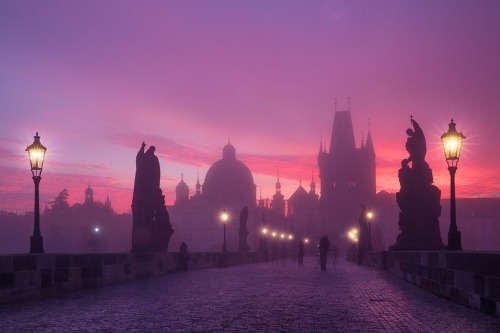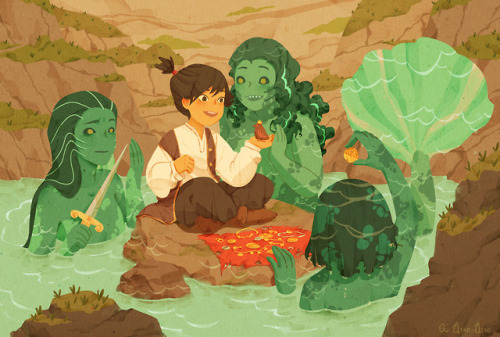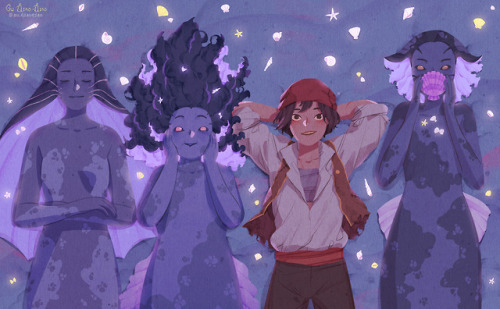Katherine Frances's Blog, page 25
August 12, 2018
just-some-moodboards:
queer trans man slytherin for anon
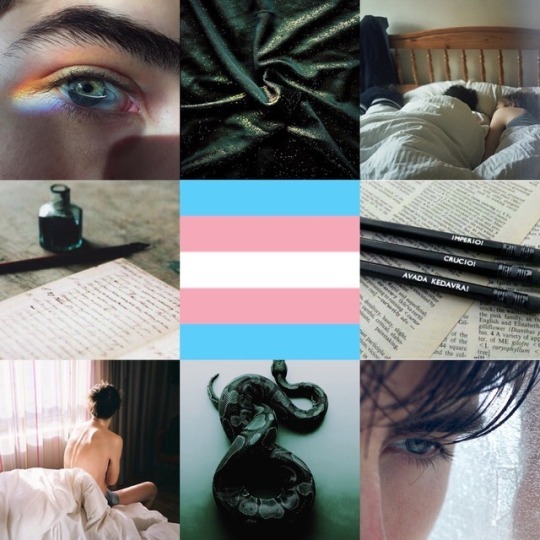
queer trans man slytherin for anon
just-some-moodboards:
queer trans man slytherin for anon

queer trans man slytherin for anon
wnq-writers:
“When you love someone, you say their name different. Like it’s safe inside your...
:
“When you love someone, you say their name different. Like it’s safe inside your mouth.”— Jodi Picoult, Handle with Care
August 11, 2018
sixpenceee:
Picture of Charles Bridge at Prague during sunset....
–(x)
k-frances:
I personally am a huge fan of the cliff hanger. I could be accused of using it too much,...
I personally am a huge fan of the cliff hanger. I could be accused of using it too much, if there is such a thing, but alas, I can’t help myself. My goal must be to insist the reader sits down intending to read one chapter and then is proverbially chained to the chair and cannot physically stand again until they’ve finished the whole novel.
Okay, that’s dramatic, but that is what makes cliff hangers so rewarding to read, and also to write. So lets talk about ‘em, how to do ‘em, and how not to do ‘em.
Cliff hanger: an ending to piece of work (visual or literary) or an ending to a designated section of a piece of work that is highly suspenseful, leaving the consumer wanting more
How not to cliff hangCould be obvious, but cliffhangers should not occur at the end of a finished piece usually. Unless you’re a real sadist. Then by all means, do it, but I’m staying away from your books. The reason for this is that cliffhangers are meant to entice the reader to keep reading, or in the case of serial work, to get pumped for the next release. If you leave a cliffhanger ending on a piece that’s finished with no sequels, the reader might just be left with too many questions, confused as to whether or not this is the finial ending, or possibly so spitting mad that they curse your name and never read another one of your book again. When you write a cliffhanger, you’re creating discomfort in the reader by making them need to know what is next, even if they otherwise would have stopped. Making a reader feel this on purpose and not resolving this feeling by having another chapter or another book that answers some of their burning questions, is not cool, and is a quick way to get your readers to hate you personally. I won’t say always, but almost.
A cliffhanger also won’t do any good if it is too forced or doesn’t have enough build up supporting it. Forcing a cliffhanger might be tricky to recognize because as a writer, we’re forcing everything, right? I mean we create it all. But it will feel forced to the reader if it’s super cliche. The character is having a casual, non-dramatic conversation with their co-character when suddenly the ledge trembles and they fall over the edge, hanging on by a pinky!!!!! This would feel forced because it comes out of nowhere, it doesn’t have anything to do with tension built throughout the story, and it’s a cliche. They’re literally hanging on a cliff. A good cliffhanger should only be dramatic in the context of your work. Character A says “She’s back in town.” when you’ve already established that the she in question is the long time frienamy of character B.
There are some events that have natural tension that you don’t have to build, but be cautious using these. The character-hanging-off-the-edge-of-a-cliff cliffhanger is the example we’ll use. On a basic level, this is a naturally tense moment. The character might fall off and die, which is a huge, heavy question for the reader to ask: Will the character die? The trick is, the reader has to have some reason to believe the character might actually die, and no, you simply tossing them off the edge of a cliff is not enough. Whenever you’re dealing with huge plot trajectory changing things like character death, you have to build a repport with your reader that you’re not going to just flippantly toss threats around and never actually follow through. I’ll give you a hint, most readers are going to assume you’re full of shit unless you prove them otherwise. This is because so much of the media they consume uses cheap visual tricks (like tossing a character of a ledge and cutting the seen) to create tension instead of building legitimate story-relevant arch tension. The key is, the cheap tricks never actually kill a main character, so the reader is going to assume you’re bluffing if in the second chapter of your book you toss off the main character. If you show your reader throughout the story that these dangerous moments do have actual consequences (character death, injury with lasting effects, or things of that nature) then you are more likely to get a legitimate tension, question-asking response from your reader when you toss your character off a ledge.
How to cliff hangThe most important clue is to follow the stories natural tension. Whatever tension you have building, your cliffhanger should tantalize the reader in relation to resolving that tension. Using the frenemy example from before, if your whole chapter has been about this frenemy, you should build off that tension for the cliffhanger by saying the frenemy is returning to town.
Once you’ve identified the stories natural tension, you need to learn to identify the highest points of tension. It’s likely you already create tension in your writing, you just need to learn to identify where exactly is the highest point. Think about the frenemy example again. Why is there a high level of tension upon character A saying “She’s back in town” and not right after when Character B says “Well, that’s fine. I’m moving tomorrow anyway. She can have this trash town.” The reason is that after the initial statement, there are more questions about how the character will react and about what this news will mean to the narrative. Places of high tension always create a lot of questions for the reader. The more intensive the questions the better. Will they go tearing into town to find this person? Will they run into each other by accident and try to be friendly? Or will they be nasty to each other? Are they going to end up falling in love?
Obviously your readers are only going to have questions that you’ve built for them. If there’s been no romantic tension leading up to this point, the reader won’t wonder if they’re going to fall in love. So you have to hint at the questions you want your reader to be asking throughout the work.
Lastly, cliffhangers are the most important to make potent and big at the end of a serial piece of work. When you finish book 1 and book 2 is coming out in a year, you need something powerful at the end to remind the reader why the hell they need to remember to by the sequel. Cliffhangers are high emotional points, and they’re at the end, both of which are scientifically supported to increase memory retention. So your reader might forget the whole over arching point of your story, but if they remember the cliffhanger at the end, they’re going to reexperience that emotion when they see the release date of book 2 coming up. If book 2 is already out, even better. A solid cliffhanger increases the likelihood that your readers will go buy it asap after finishing book 1.
I hope this was helpful and informative. For more posts like this and much more, check out my Writer’s Library.
Kim Shimmers and the Deathly Hallows
A Harry Potter fanfic by me (and the 5th, final installment in the Kim Shimmers series)

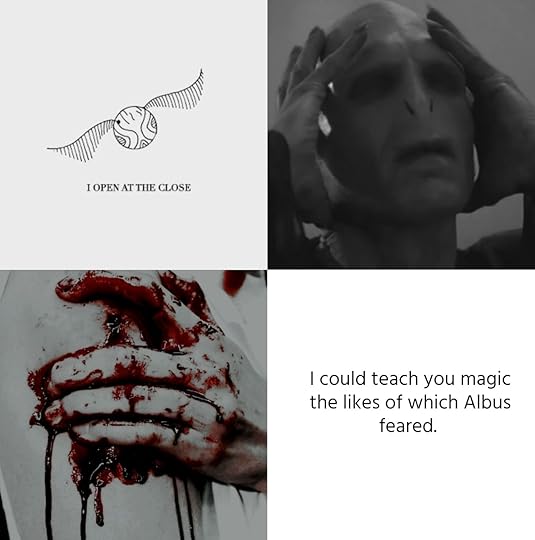
She was like Voldemort in at least one way. They were both of the same make now.
Dead,
alive, the two of them were some cross between. Perhaps he had even felt it in
her.
This Harry Potter fan fiction (as long as all goes according to plan) will be posted by the beginning of every week. The pictures above are not mine, though I edited some.
Chapter 2
Not Dead
Kim sucked in a mouthful of water and immediately began choking. She was floating, not in the blackness of before, but in a new blackness. Her bones were piercingly cold, and there was no light pressing on her eyelids. She flailed in the water for a moment, limbs feeling impossibly heavy until she remembered how to swim. And I must swim, she though with increasing panic. Her lungs burned from the lake water in her throat, and the pressure of being deep under made her feel more that she’d been buried alive than drowned.
She opened her eyes to the blurry murk, unable to see much past a few feet. Drifting plant debris. Fish. She kicked as heard as she could, but being fully clothed made her drag unevenly through the thick water. Her wand was clutched in her hand, though she didn’t remember putting it there, and she couldn’t think about it either. All she could think was, surface, air, need air… I’m drowning.
She drew in water to her mouth again involuntarily as she kicked, unable to stop herself attempting to gasp. She couldn’t even think of magic in her panic, couldn’t calm her mind enough to remember a spell that might help her. The surface broke over her head, her eyes were exploded with light, and her lungs projected the water out of her in a violent caught. The air was so much thinner than water, as though she’d forgotten what it felt like. The breeze was cool against her sopping wet skin. The sun blinded her, and the air scraped down her throat and into her pinched lungs. She gasped and flailed for a moment as her heart thundered impossibly hard.
As soon as her lungs had received adequate, if not painful air, her arms slowed their flailing. She twisted in the water, frantically taking in her surroundings. She was indeed in a lake, and the shore was thankfully not far. It was lush grass that came to meet with a short muddy embankment, a thin forest beyond. Kim swam for it, huffing and coughing still. Her feet sunk into a muddy floor soon, thankfully, though she found with standing that her body was heavy. Her sodden robes weighed her down so much so that she stumbled in the mud and landed chest against the solid embankment of grass. She coughed some more, the agitation of her throat growing worse with the more air she sucked into it. More water leaked from her mouth than seemed possible. She spat it in the grass before her. Then there was a light flapping sound and something came to land in the grass nearby.
She looked up from the ground, panting and bleary eyed, to see Strix. Her feathers were a bit damp so she puffed herself forcefully, throwing off droplets of water and becoming spherical with fluff. For a moment they merely looked at one another.
“It was you, wasn’t it,” she said.
nyehcromancer:
samswritingtips:
A breakdown of medieval armor,...
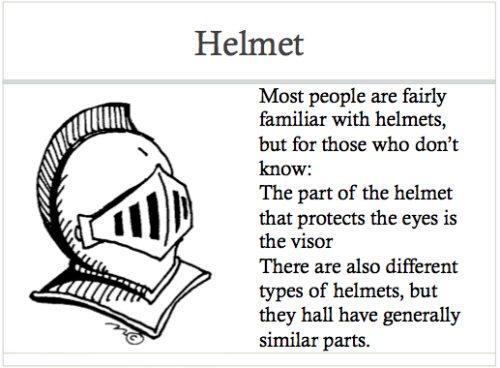
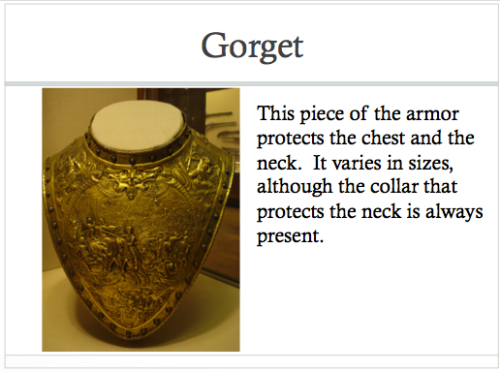
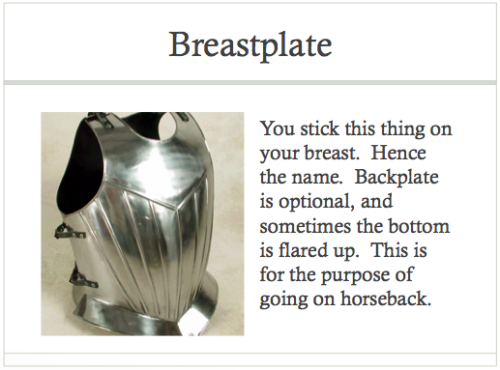

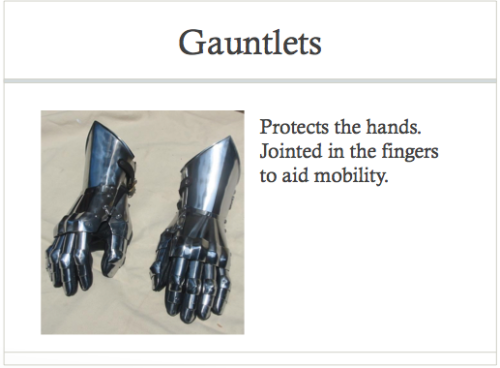

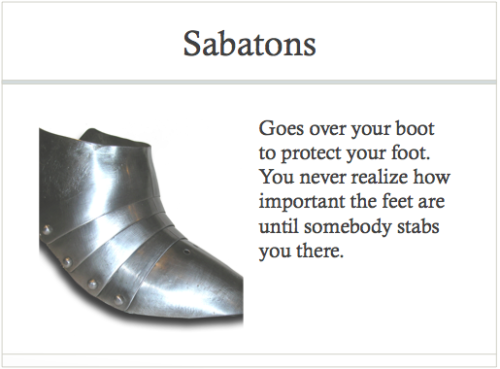


A breakdown of medieval armor, since a lot of pieces are required to create a full suit.
Ref

